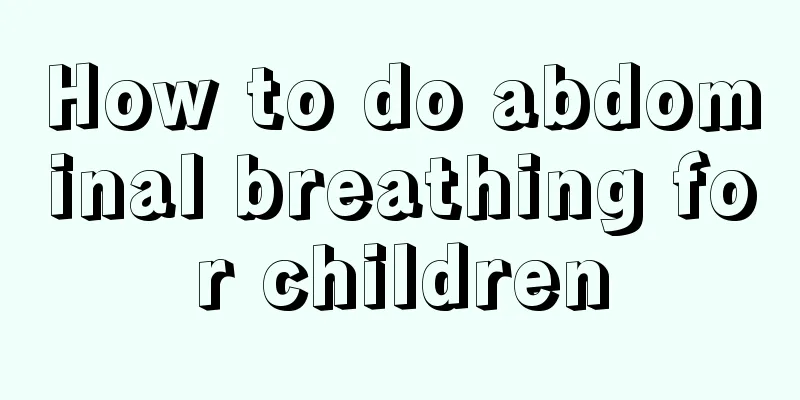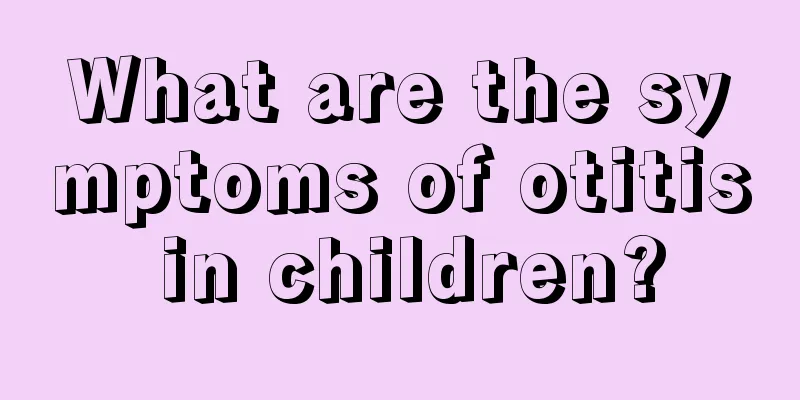My four-month-old baby still has a little shaking head

|
After the baby is born, as the baby grows older, the body changes a lot. Generally, a four-month-old baby can lie on his stomach and raise his head, and the baby's head no longer shakes. The head looks very stable. However, since each baby's physical condition is different, some babies still have a slight shake in their heads at four months old. I wonder if this symptom is normal for babies? Why is my four-month-old baby's head still shaking? If a four-month-old baby's head shakes slightly, it may be due to the child's poor constitution or it may be caused by an illness. You can observe first and give your child more exercise and massage. If the symptoms do not improve, it is best to take your child to the hospital for examination and treatment in time. Four-month-old baby development standard Height: Boys: height 57.9-71.7cm; weight 5.25-10.39kg; head circumference 38.0-45.9cm. Baby girl: height 56.7-70.0cm; weight 4.93-9.66kg; head circumference 37.2-44.6cm. Fontanelle: By the end of the 4th month, the posterior fontanelle will have closed; the head will still appear larger because it grows faster than the rest of the body, which is perfectly normal. Neck: At 4 months, your baby's head is able to remain stable in all directions. Lower extremities: Your child can flex and straighten his legs voluntarily, and when he is placed on his feet to stay upright, he will push down and straighten his legs. Fingers: Compared with before, the thumb is relatively flexible when holding things, and the legs can support the body when standing. Small movements: Reaching for hanging toys; grasping accurately; reaching out and approaching objects. Gross movements: supporting with forearms; turning over; being able to sit. Movement: He can lift his head and chest when supported on his elbows and can raise his head to 90 degrees with his shoulders when in prone position. When held in the arms, the child's head can stand upright and steady. The child flexes and straightens the leg voluntarily. He would then try to bend his knees and discover that he could jump. Vision: Flexible sight, able to shift from one object to another; good head-eye coordination, both eyes can follow moving objects from one side to the other, move 180°, and track objects. Can observe lumps of about 1 cm. At the end of 4 months, both eyes can see the same object, and the coordination between the two eyes is good. Hearing: Laugh out loud when happy. He makes a gurgling sound when someone talks to him. Be interested in your own voice and utter some single syllables, repeating them over and over again. Language: babbling; learning to make sounds. Social: Loves to touch mom's face; likes to play hide-and-seek. Cognition: Look for targets; turn head toward sound source; sense and recognize mother and people with familiar faces; like to look in the mirror; have a great interest in things around them and like to play with others. Independence: Licking with a spoon, regular sleeping habits. Diet for a four-month-old baby 1. When cooking complementary foods, do not use any seasonings, such as salt, which will damage the baby's delicate kidneys. 2. Add rice porridge, juice and vegetable soup appropriately. After the child has adapted to rice porridge, juice and vegetable soup, start adding protein foods. At the beginning, only 1/4 of egg yolk paste can be added, and egg whites must not be fed. 3. Rice cereal: When adding complementary food to a 4-month-old baby, you may want to choose baby rice cereal, which is less likely to cause allergies in the baby. It is not recommended to add egg yolk too early. 4. Egg yolk: When adding egg yolk for the first time, you may wish to be cautious and try patiently from 1/8 to 1/4. Make sure that the baby has no allergic symptoms such as vomiting, diarrhea, eczema, etc., and then gradually increase the amount). Egg yolk can supplement iron. |
<<: How much breast milk does a four-month-old baby eat?
>>: Four-month-old baby's feet sometimes shake
Recommend
How to correct children's picky eating?
Generally speaking, children have more or less pi...
How many times does a two-month-old baby poop?
Metabolism is an instinct of our human nature. Th...
What are the reasons for red foreskin in children?
When a boy is born, if the foreskin is relatively...
The reason why children have white spots on their fingers
In fact, the situation of white spots on children...
What are the developmental indicators for a 2-year-old baby?
Babies aged 2 years develop at a relatively fast ...
How to prevent children from being picky eaters
Current medical research shows that if a child is...
How to choose a children's car?
Today's society is progressing and the times ...
Is it easy to treat white palace madness in children?
The occurrence of vitiligo has a serious impact o...
What to do if your child has blood in his stool
Don’t think that only adults can change their hea...
Is it good for children to drink lemon honey water?
Everyone knows that lemon honey water is a drink ...
What to do if your one-year-old baby is too naughty?
After birth, the baby will grow up gradually with...
How to cook goose eggs for babies
Goose eggs are a kind of food suitable for many p...
What to do if your child doesn't like to grow taller
Nowadays, most families have only one child, so t...
Why does my child always grind his teeth?
Teeth grinding is a normal physiological habit in...
What to do if children have sore throat due to tonsillitis
Many children with tonsillitis suffer a lot becau...









